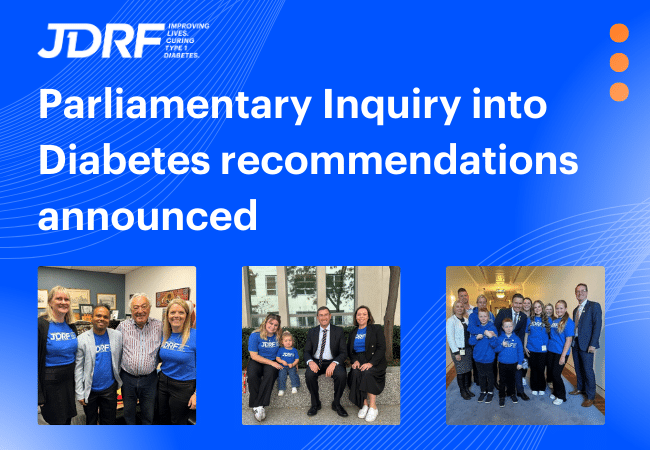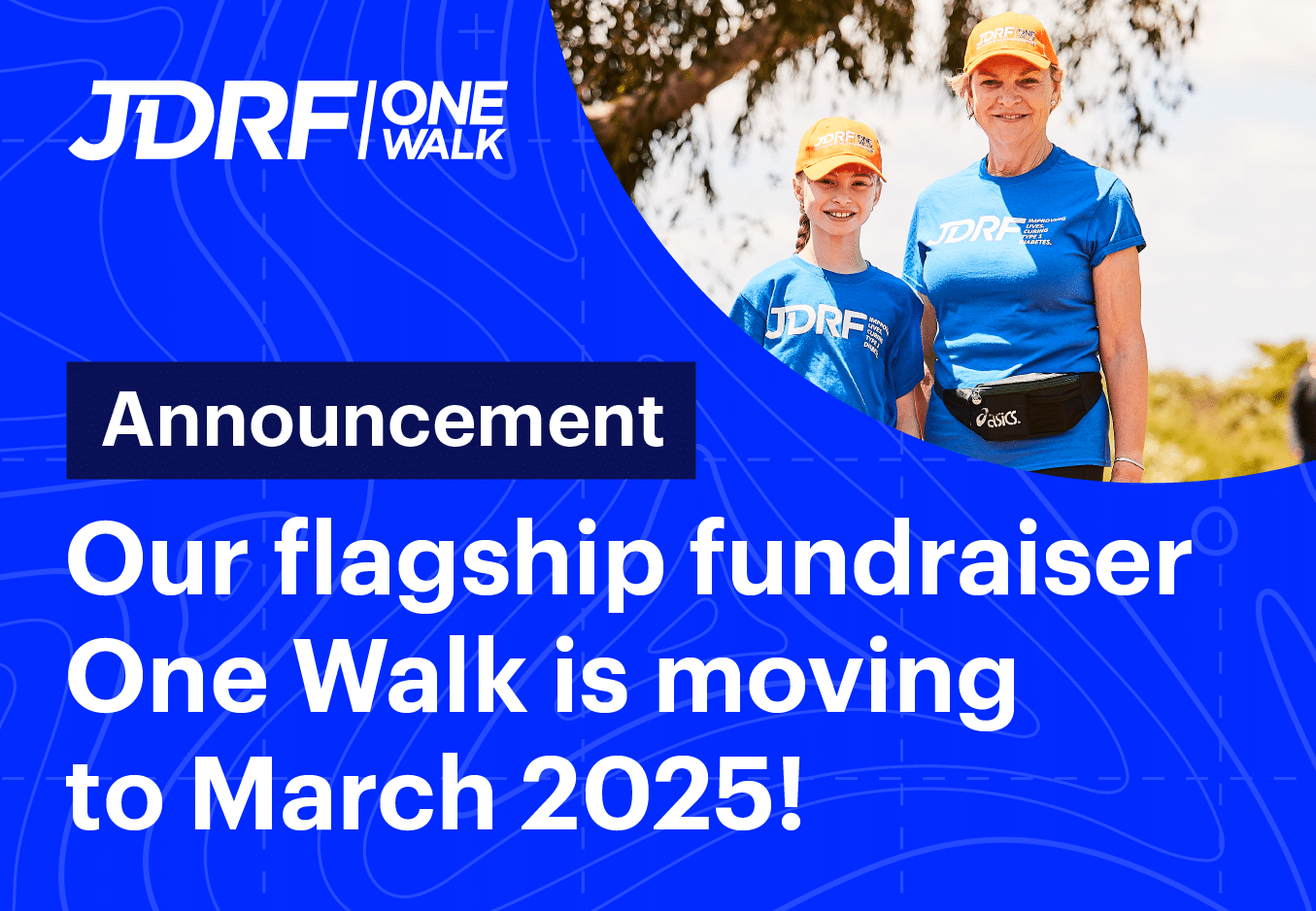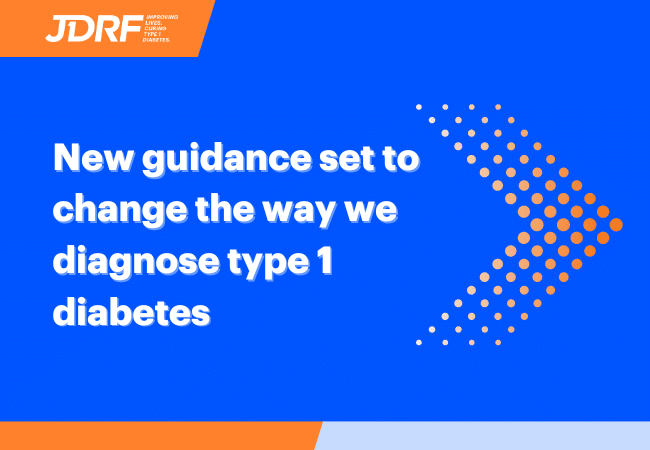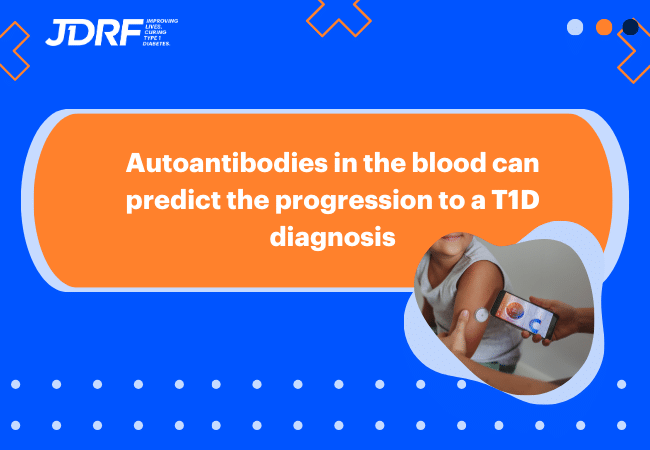Advocacy Spotlight: Freya & Jackie Goldston

Freya has been living with type 1 diabetes (T1D) for 14 years, after being diagnosed at just 11 months old. Since then, Freya and her mum Jackie have been fiercely advocating for the T1D community on behalf of JDRF Australia.
We spoke to both Freya and Jackie about their family’s journey with T1D and their amazing work advocating for JDRF.
Jackie
How did you get involved with JDRF’s advocacy?
I have a background in behaviour change programs and social marketing, so when my daughter was diagnosed with T1D as a baby, one of the first things I wanted to do was help JDRF as much as I could.
What drives you to advocate for people living with T1D?
Diabetes is misunderstood generally, underfunded and underrepresented in government policy so I am keen to do all that I can to increase both awareness and funding to make the lives of people with type 1 easier and hopefully less expensive!
How long have you been advocating?
I have been advocating for nearly 14 years.
Why is the Clinical Research Network (CRN) so important to you?
The CRN is important to me as it brings together our smartest minds and most innovative researchers. For me the ultimate goal is that there will one day be a cure, but on the pathway there, the CRN assists in making leaps in technology, treatment and best practice for my daughter and all people with T1D.
What excites you about CRN research?
I am excited by the researchers thinking outside the box of what has been done before, but also, working with international partners to continue promising opportunities.
What has been a highlight for you as a JDRF advocate?
Way back in 2014, I was asked to write a fear-based story for a number of different media outlets to raise awareness about T1D for World Diabetes Day. I had so many parents reach out to me after the articles were published, thanking me for my honesty and helping them to explain to other people what we go through.
What makes this a highlight now, is how far we have come. Parents of children who are diagnosed today have better technology, better insulin, and hopefully, better trained staff who now offer more hope to our children. The JDRF advocacy program has been a big part of all of the improvements, and I have been proud and excited to watch every change over the years (and of course selfishly thrilled as this helps my daughter).
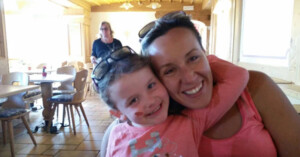
Freya & Jackie (2014)
Freya
How did you get involved with JDRF’s advocacy?
As someone who has grown up with T1D and understands the importance of research (both clinical and behavioural), it has always been a big passion of mine to advocate for people who aren’t as fortunate as me, to be able to have a voice in the wider community. I am extremely grateful to my mum, who has helped a lot in organising the Walk to Cure Diabetes/One Walk in the past, and now helping me to be able to get my voice heard by the media and politicians.
What drives you to advocate for people living with T1D?
I really understand the struggles of living with and around people who don’t understand what life with diabetes is really like. It is hard, things aren’t always as accessible as we want, talking about diabetes can feel embarrassing, and you can feel like a nuisance or like you aren’t normal. I want to help people living like that, I want to help people like me who are living with diabetes get a better life. Seeing the amount of progress in recent years really warms my heart and helps me drive to continue this journey.
How long have you been advocating?
I would like to say I’ve been advocating for 14 years like my mum, but since I was diagnosed at 11 months old that’s probably not true. However, I have been advocating for as long as I can remember. Some of my earliest memories are at the Walk to Cure Diabetes on the Sunshine Coast and talking to journalists and Members of Parliament.
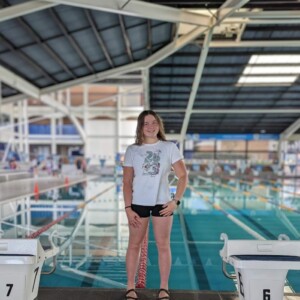
Freya represented QLD Swimming at the Tilly Cup in September 2023 for the under 18s team. She was the first person living with T1D to be made a member of this team.
What excites you about CRN research?
The CRN is an important initiative that I think all people with diabetes and in the support networks are excited about. The idea of finding new and improved technology gives me hope for a better future. Even the idea of a cure is such an exciting concept – one that I have never wanted to let myself think of as remotely possible, and now there are developments moving into the realm of possibilities. The CRN has given countless opportunities to improve life for people with T1D, and I’m so happy to see the progress it’s making.
What has been a highlight for you as a JDRF advocate?
One of the biggest highlights of my advocacy for the JDRF would be getting the opportunity to travel to Canberra and Parliament House as part of Kids in the House. It was an incredible opportunity where I was able to talk to politicians and key stakeholders about continuing funding for diabetes research, as well as discuss issues for people with diabetes. It really changed my perspective as an advocate and gave me connections to continue advocating for diabetes within the government.
Recently, I have been advocating for Fiasp to remain on the Pharmaceutical Benefits Scheme (PBS). Fiasp is a newer and innovative type of insulin that acts significantly faster than any other insulin on the Australian market. This insulin is important to me personally as I am a swimmer, and have my pump off for hours of the day, meaning I need to get insulin quickly into my system to prevent hyperglycaemia. It was also important for many thousands other people across Australia. I was so happy and relieved when I heard that Fiasp would continue to be available on the PBS.
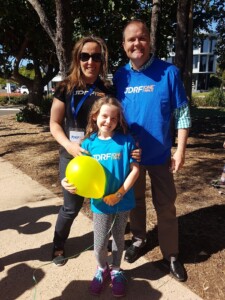
One Walk (2016)
We extend our heartfelt appreciation to Freya and Jackie for their incredible dedication to T1D and the community. Their unwavering support and tireless advocacy efforts make a significant impact on the lives of those affected by this condition.

